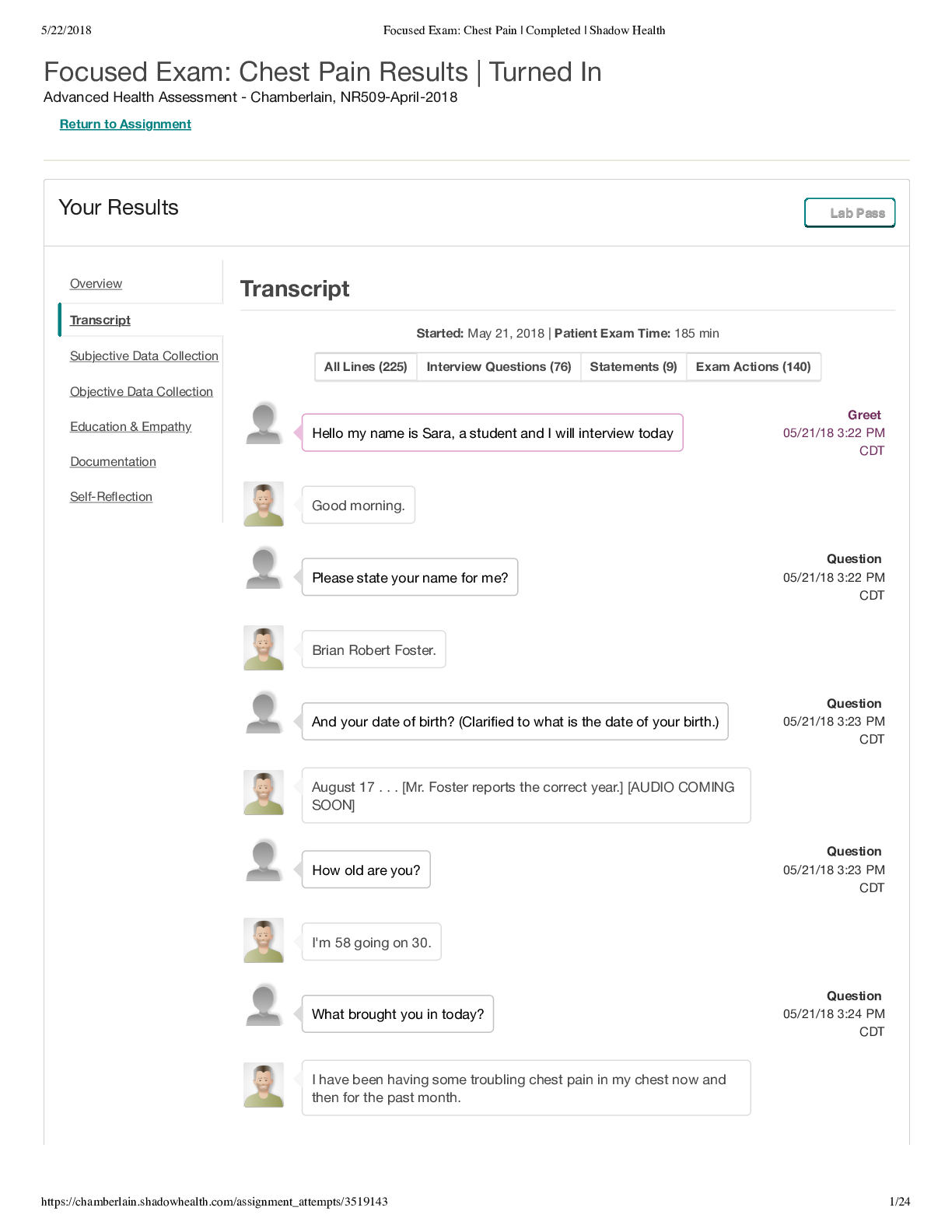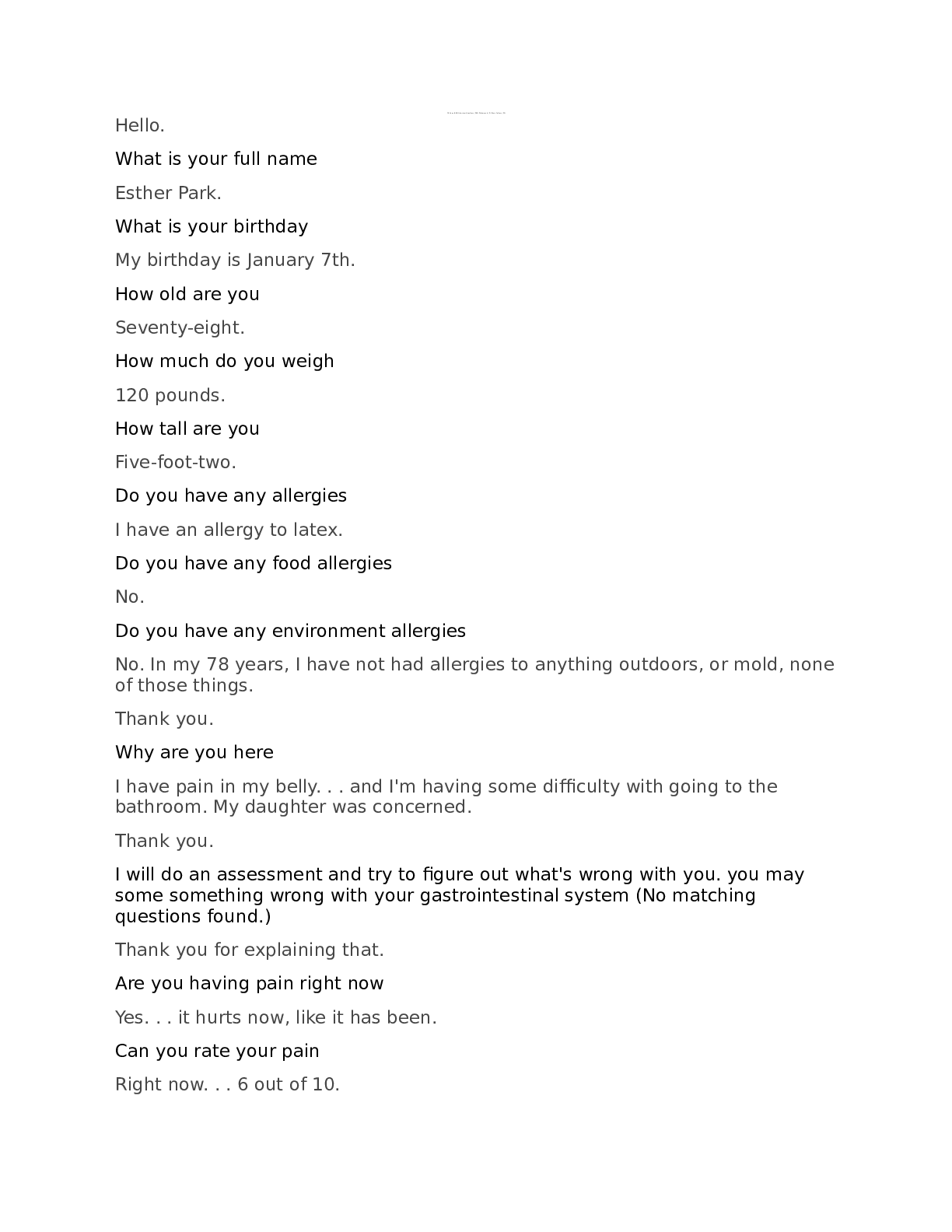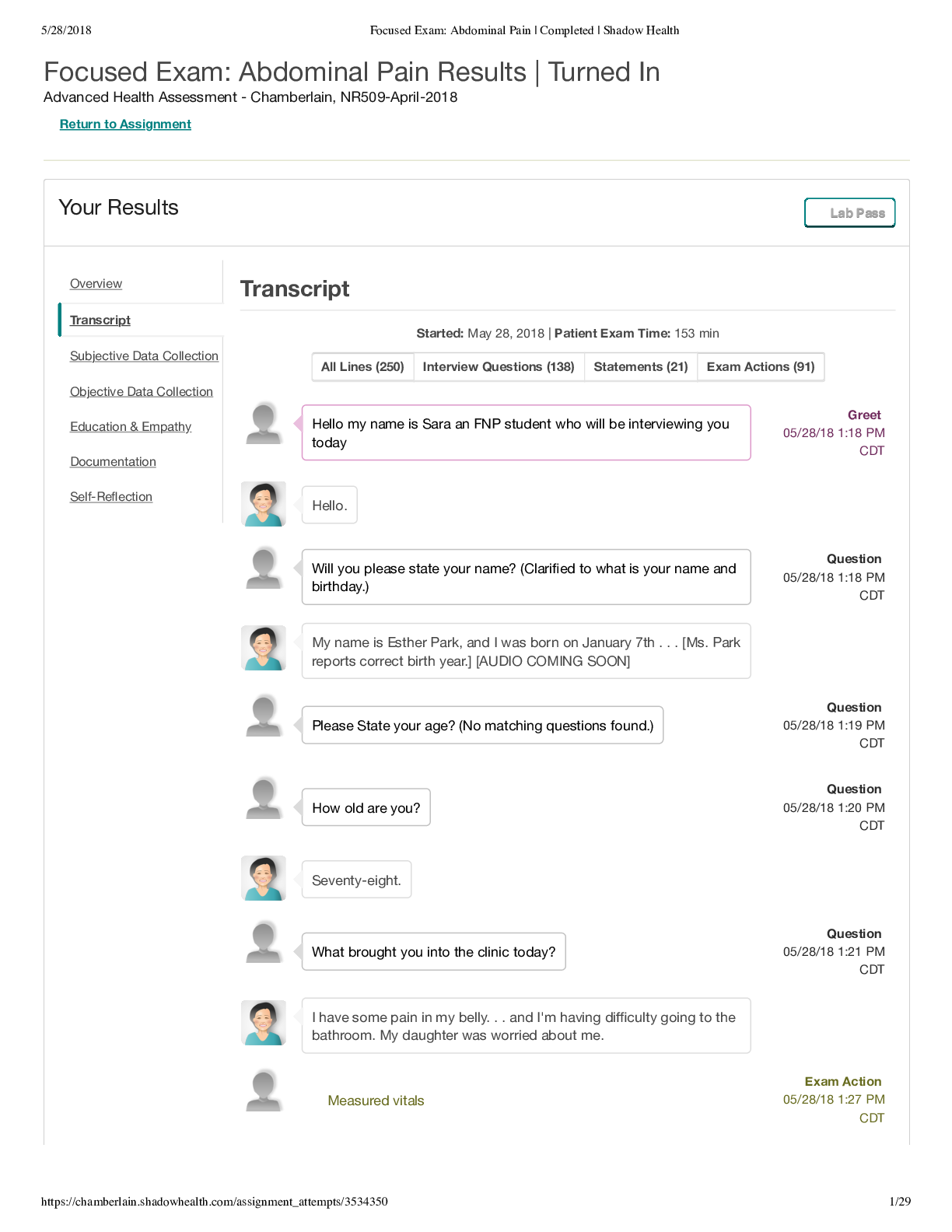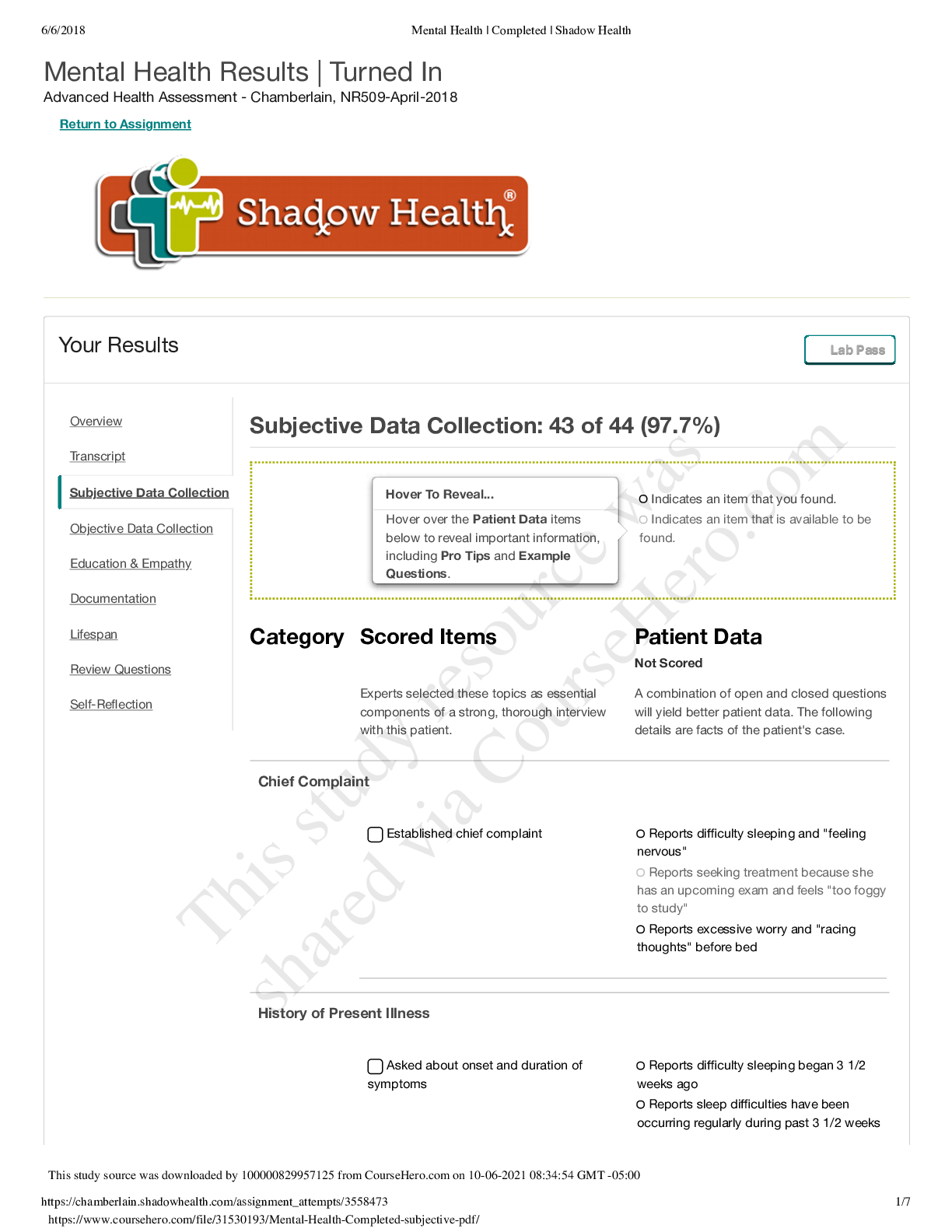*NURSING > SHADOW HEALTH > NR509__ Shadow Health Physical Assessment Assignment Guidelines and Grading Rubric. (All)
NR509__ Shadow Health Physical Assessment Assignment Guidelines and Grading Rubric.
Document Content and Description Below
Purpose Shadow Health Physical Assessment Assignment Guidelines and Grading Rubric In order to provide high quality healthcare to patients, FNP students must possess competency regarding adva... nced practice physical assessment skills and techniques. The Shadow Health Physical Assessment Assignments allow the student to interact with virtual patients in a standardized virtual learning environment which simulates real life clinical experiences in order to achieve weekly learning objectives, course outcomes, and program outcomes. Competence is the observable ability of a health professional to integrate knowledge, skills, values, and attitudes. Competency is more than the attainment of skills; it involves other qualities such as attitudes, motives, personal insightfulness, interpretive ability, receptivity, maturity, and self- assessment. Since competencies are observable, they can be measured and assessed to ensure their acquisition. Course Outcomes These activities are guided by the following Course Outcomes (COs): 1. Apply advanced practice nursing knowledge to collecting health history information and physical examination findings for various patient populations. (PO 1, 2) 2. Differentiate normal and abnormal health history and physical examination findings. (PO 1, 2) 3. Document health history and physical examination findings in a logical and organized sequence. (PO 1, 2) 4. Adapt health history and physical examination skills to the developmental, gender-related, age-specific, and special population needs of the individual patient. (PO 1, 2) 5. Conduct focused and comprehensive health histories and examinations for various patient populations. (PO 1, 2) The purposes of the Shadow Health Physical Assessment Assignments are to: (a) increase knowledge and understanding of advanced practice physical assessment skills and techniques, (b) conduct focused and comprehensive histories and physical assessments for various patient populations, (c) adapt or modify your physical assessment skills and techniques to suit the individual needs of the patient, (d) apply assessment skills and techniques to gather subjective and objective data, (e) differentiate normal from abnormal physical examination findings, (f) summarize, organize, and appropriately document findings using correct professional terminology, (g) practice developing primary and differential diagnoses, (h) practice creating treatment plans which include diagnostics, medication, education, consultation/referral, and follow-up planning; and (i) analyze and reflect on own performance to gain insight and foster knowledge. Due Dates [Show More]
Last updated: 2 years ago
Preview 1 out of 5 pages
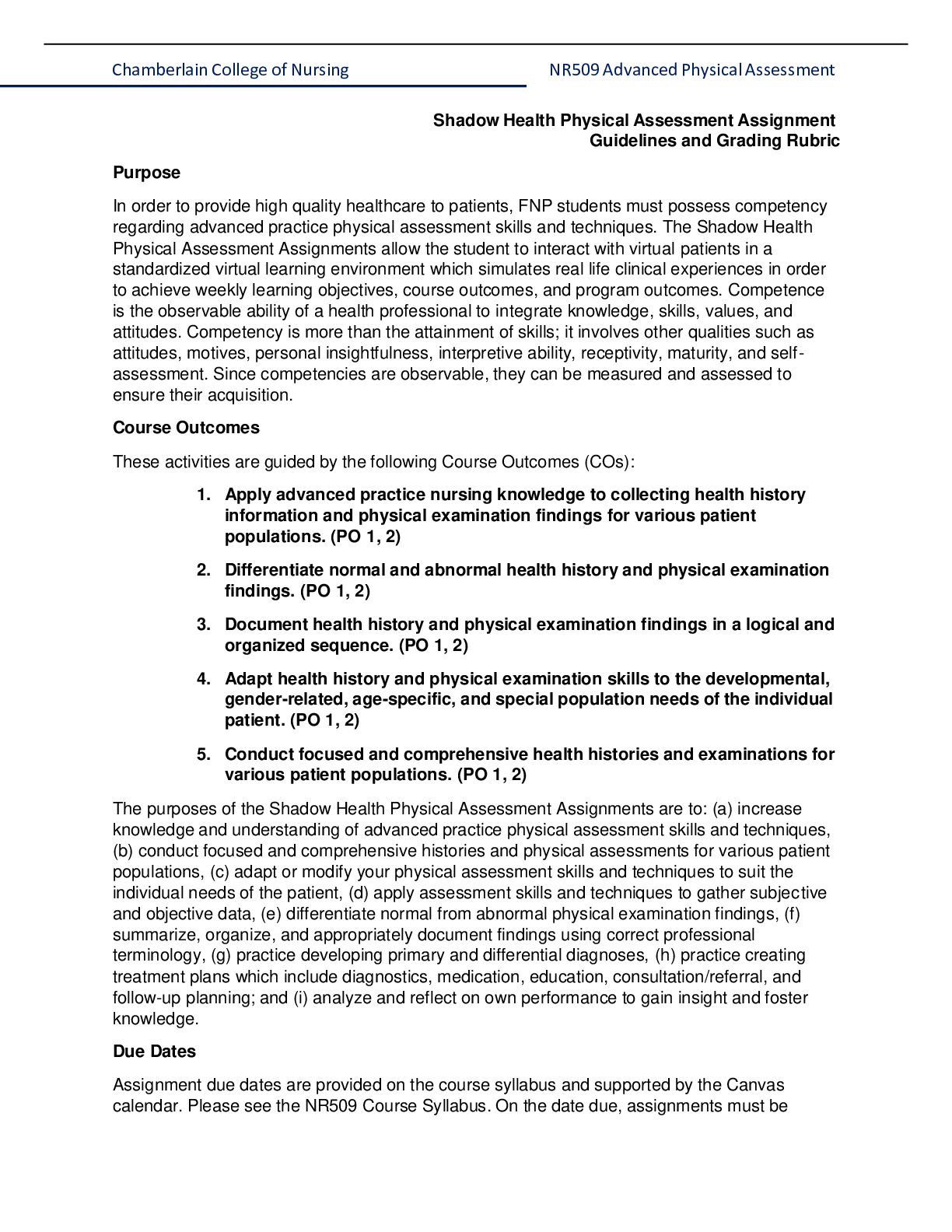
Buy this document to get the full access instantly
Instant Download Access after purchase
Buy NowInstant download
We Accept:

Reviews( 0 )
$14.50
Can't find what you want? Try our AI powered Search
Document information
Connected school, study & course
About the document
Uploaded On
Aug 14, 2021
Number of pages
5
Written in
Additional information
This document has been written for:
Uploaded
Aug 14, 2021
Downloads
0
Views
79




